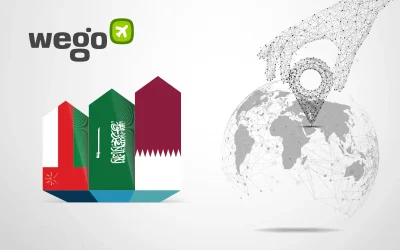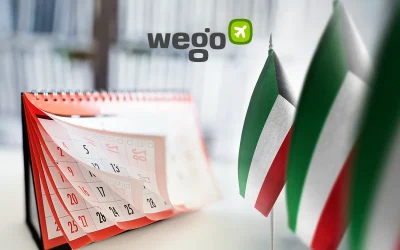This article has been reviewed and fact-checked by Wego’s editorial team.
The Middle East is making a remarkable comeback in the leisure travel sector, demonstrating the most robust regional recovery worldwide, Wego reports. In the aftermath of the COVID-19 pandemic, Saudi Arabia and the United Arab Emirates (UAE) are leading this resurgence, solidifying their positions as the top two inbound destinations for leisure spending. The latest data from the WTM Global Travel Report reveals that the Middle East has not only exceeded its 2019 levels of leisure spending but is also the only region to fully recover in volume, with an anticipated influx of 33 million leisure travelers this year.
Saudi Arabia and UAE spearhead the resurgence
Saudi Arabia and the UAE are the key players driving the recovery of the Middle East’s tourism industry. Both nations have shown a commitment to tourism by heavily investing in infrastructure, strategically positioning tourism development as a crucial factor in diversifying their economies away from hydrocarbon dependence.
The report underscores that Saudi Arabia’s inbound spending has impressively outperformed 2019 by 66 percent in dollar terms, while the UAE follows closely with a significant 21 percent increase. Furthermore, domestic visits in both countries have skyrocketed, with Saudi Arabia leading at 37 percent and the UAE at a remarkable 66 percent above 2019 levels.
Leisure spending projections for 2023
The Middle East is set to witness a comprehensive recovery in leisure spending across the region, with all countries expected to return to their 2019 levels, excluding Iraq. Significant growth is anticipated in Kuwait and Saudi Arabia, with projections indicating a remarkable 66 percent and 90 percent increase in leisure spending compared to 2019.
Kuwait’s strategic efforts to boost non-oil revenues underscore the importance of tourism, positioning it as a key component of its economic diversification strategy.
Domestic leisure spending on the rise
In 2023, the Middle East is expected to experience a surge in domestic leisure spending, exceeding 2019 levels in almost every country. Bahrain is projected to lead the way with a 113 percent increase, while the UAE is expected to reach an impressive 166 percent of 2019 levels.
Saudi Arabia is forecasted to have the highest domestic leisure spending in the region, recovering to 137 percent of its 2019 levels. This trend reflects a growing preference for domestic travel, underscoring the resilience of the region’s tourism sector.
Future outlook and projections
Looking ahead, Saudi Arabia is poised to maintain its status as the largest inbound leisure market based on spending, with a projected figure of USD 40.7 billion in 2024, up from USD 22.1 billion in 2019. The UAE is also expected to witness substantial growth, fueled by its successful hosting of the 2020 World Expo in Dubai, which took place in 2021-22 due to the pandemic. The Expo’s success has showcased the UAE’s capacity and eagerness to attract and host large-scale events, contributing to the nation’s continued tourism expansion.
The report concludes that Saudi Arabia is set for significant growth, attributed to new visa arrangements and ongoing capacity development, affirming the Middle East’s position as one of the most exciting and dynamic regions for tourism globally.












